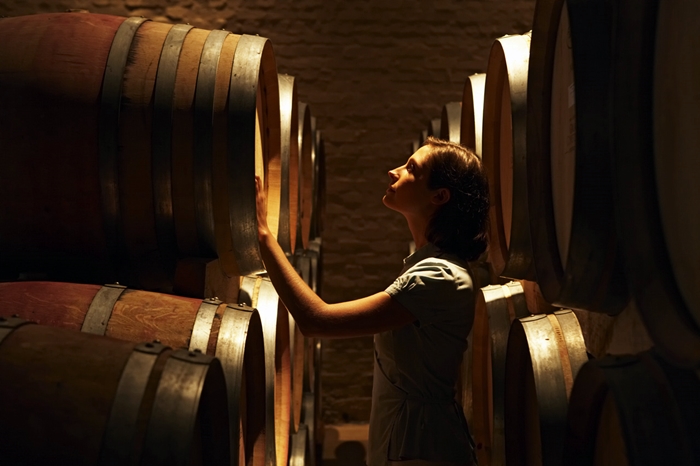Wine maturation and aging: a comprehensive overview
The wine lover's guide to wine aging: techniques, traditions, and tasting notes

The process of aging wine is a slow and methodical work that requires a refined understanding and a specific set of practices. This comprehensive process shapes the characteristics and qualities of the wine, preparing it for consumption. The method and duration of wine storage can significantly influence its taste and character.
Types of Aging and Storage
Different wines undergo various aging processes and treatments before they are ready for bottling. Many white wines are bottled almost immediately after vinification and must be consumed within a few months. Others, both red and white, remain in vats or barrels for more extended periods and then continue to age in the bottle. Reds intended for long aging, such as reserves and grand reserves, may spend over two years in vats or barrels before bottling. Part of the bottle aging is often done in the consumer's cellar.
Barrels and Bottles
The use of barrels has been essential for the evolution of the art of aging. Barrels and bottles have brought profound changes, and the two methods of aging - in vats (barrels) and in bottles - can complement each other. Some wines are kept in barrels until they are ready for consumption, while others are bottled long before they are ready.
Historical Origins
- Ancient Practices: In antiquity, wine was likely preserved in goat-skin wineskins, a practice that persisted until the beginning of this century. These wines often had a strong characteristic odor. In the ancient world, clay jars were used to preserve and transport wine. Romans began to manufacture wooden barrels after crossing the Alps, making barrels or casks the primary containers for transporting wine.
- Barrel Development: The barrel, lighter and easier to transport and repair than a jar or amphora, became essential for wine commercialization long before its virtues for improving aging were discovered.
- Transition from Wood to Other Materials: Until the late 19th century, wood was predominantly used for both fermentation vats and barrels. Later, cement vats and vitrified steel began to be utilized.
Maturation
The practice of aging wine is relatively modern. While the Romans knew that a sealed amphora allowed good wine preservation, this art was lost during the Middle Ages when young and fruity wines were appreciated more. The only slightly sophisticated technique surviving from this period was cooperage.
The significant changes date from the 17th century. Most of the procedures used today date back to the late 17th or early 18th century. Interestingly, these techniques were discovered not by scientists but by pragmatic winemakers and merchants.
Health and Preservation
In the presence of oxygen, bacteria transform wine into vinegar. A full barrel contains little or no oxygen, and a cold cellar also slows down this reaction. The strong alcohol content of Mediterranean sweet wines inhibits bacteria, preventing the wine from turning sour. However, what allowed proper stabilization of wine was the rediscovery of sulfur dioxide in medieval Germany. Currently, there is a tendency to reduce or even avoid the use of sulfur.
Objective of Aging
Aging includes operations to remove certain solid substances in suspension in the new wine that could affect it later. If all or part of these substances are removed, the wine's major problem is avoided: re-fermentation that can transform wine into vinegar.
Intervention and Modern Techniques
Known by various names, including organic winemaking, a new way of aging is being developed that involves minimal intervention. Others prefer to control operations with new technologies without taking commercial risks, producing equally high-quality wines.
The principle of minimal intervention may exclude the use of pumps, considered by its proponents to harm the wine. Some modern operations function this way, although the 'anti-pump' school seems more like a minimalist philosophy than a practice based on scientific experience.
Currently, chemical agents, including sulfur dioxide, are used as little as possible. Nonetheless, it's possible not to use any chemical products, in which case extreme care and cleanliness are required.
The art and science of wine aging are complex and rich in history. From the traditional methods of the ancient world to the cutting-edge techniques of today, the way wine is aged and stored significantly impacts its character, flavor, and quality. The journey from the vine to the bottle is a fascinating blend of tradition, innovation, craftsmanship, and technology, reflecting a profound understanding of the intricate relationship between nature and human intervention. As the wine world continues to evolve, so too will the methods and philosophies surrounding this captivating and essential aspect of wine culture. Whether a connoisseur or casual enthusiast, understanding the intricacies of wine aging can enhance the appreciation and enjoyment of this timeless beverage.
Founded in 2007, Vinetur® is a registered trademark of VGSC S.L. with a long history in the wine industry.
VGSC, S.L. with VAT number B70255591 is a spanish company legally registered in the Commercial Register of the city of Santiago de Compostela, with registration number: Bulletin 181, Reference 356049 in Volume 13, Page 107, Section 6, Sheet 45028, Entry 2.
Email: [email protected]
Headquarters and offices located in Vilagarcia de Arousa, Spain.